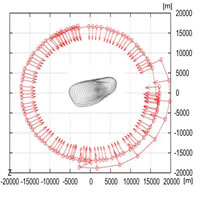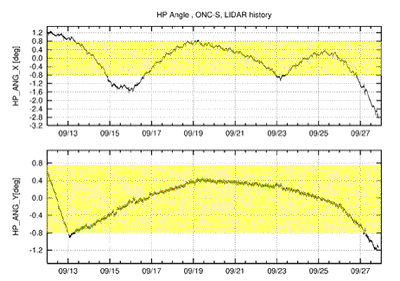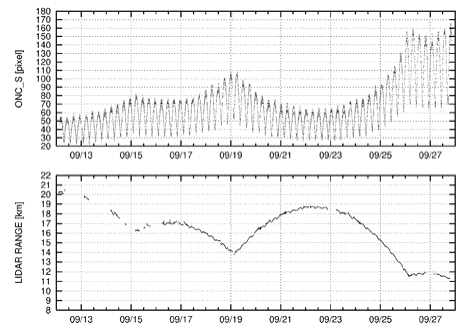TOP > Topics > 2005 > Imaging and position keeping at the Gate Position
![]()
Imaging and position keeping at the Gate Position
Exposures at Gate Position
Since its arrival on September 12th at the Gate Position 20km from Itokawa, Hayabusa has made sufficient numbers of exposures from omni-directions in the equatorial plane.
This figure shows the exposure directions and distances of those exposures with respect to Itokawa.
Note Itokawa size is not in scale.
On the Web Release of High Resolution Data
- Fortunately, Hayabusa has accumulated a lot of very valuable images and the other data so far. And the data amount increases day by day. They are really precious and may make a huge impact to the existing planetary science knowledge.
- High resolution images themselves can be readily used for improper and inaccurate interpretation. And Hayabusa project intends to add adequate calibration and speculation to those data and will make them public later but in timely manner.
- To this end, Hayabusa project for the time being will not release every detailed information. We in advance would appreciate the understanding of the Hayabusa supporters in the world.
Station Keeping and Pointing to Itokawa
|
- Hayabusa needs to point its High Gain Antenna to the Earth for data transmission, while it has to make their instruments’ field-of-view directions to Itokawa by maintaining its relative position to both Itokawa and the Earth directions.
- This figure shows how the Hayabusa has deviated from the Earth direction in angle. Yellow bands represent when Hayabusa captured Itokawa at their instruments’ center while the high data transmission rate was maintained.
Laser Altimeter and Image-based Pseudo Range
|
- Hayabusa is equipped with a laser altimeter that measures the altitude with the accuracy of about 1 meter. (LIDAR RANGE) Hayabusa is also given an autonomous station keeping capability that outputs a pseudo range data based on the illuminated pixels area. (ONC-S) , which shows a sinusoidal behavior due to the rotation motion of Itokawa.
- This figure shows both measurements well correlate with each other and accurate information has been obtained and accumulated.
October 3, 2005








